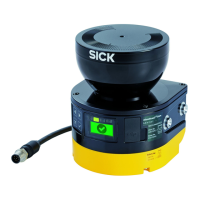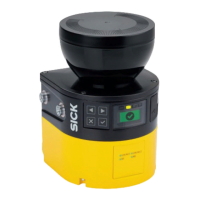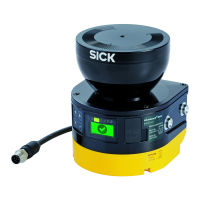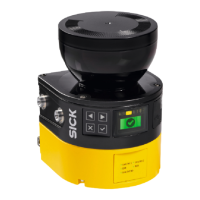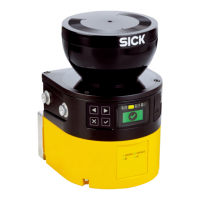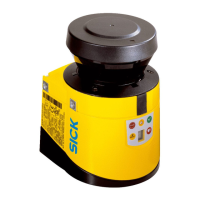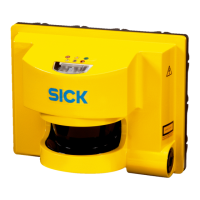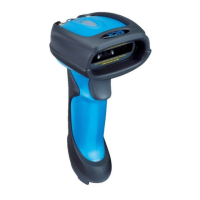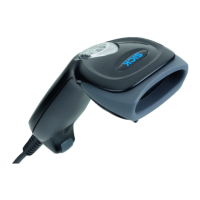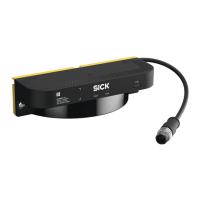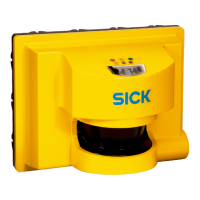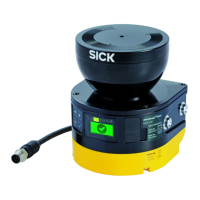
Do you have a question about the SICK microScan3 Core I/O AIDA and is the answer not in the manual?
| Scanning angle | 275° |
|---|---|
| Protection class | IP65 |
| Configuration method | SOPAS ET |
| Enclosure rating | IP65 |
| Dimensions | 102 mm x 152 mm x 106 mm |
| Scanning range | 5.5 m |
| Protective field range | 5.5 m |
| Number of monitoring cases | 128 |
| Supply voltage | 24 V DC |
| Performance level | PL e (ISO 13849-1) |
| Warning field range | 5.5 m |
| Resolution for safety field | 30 mm / 40 mm / 50 mm / 70 mm |
| Connection type | M12 |
| Protective field resolution | 30, 40, 50, 70 mm |
| Number of protective fields | 128 |
Provides overall safety guidelines and warnings for the safety laser scanner.
Specifies the applications for which the safety laser scanner is suitable.
Lists scenarios and applications where the scanner should not be used.
Outlines the necessary expertise for safe installation and operation.
Explains the basic operating principle and function of the safety laser scanner.
Illustrates different use cases like hazardous area and point protection.
Guidelines for physically installing the safety laser scanner and preventing access.
Information on connecting the scanner to machine control systems and requirements.
Procedures for verifying the scanner's functionality before and after changes.
Detailed steps and options for physically mounting the safety laser scanner.
Details the pin layout and function for the M12 connector.
Introduction to the software used for configuring the safety laser scanner.
Defining parameters for the scanner's monitoring area, task, and resolution.
Configuring protective and contour fields using the editor, including sampling.
Procedures for precisely aligning the safety laser scanner.
Verifying functionality after setup or any subsequent changes.
Steps for replacing the entire scanner unit, including system plug and alignment.
Safety precautions to be taken during troubleshooting procedures.
Using the device's pushbuttons and menu for fault analysis.
Understanding error codes, fault types, and symbols shown on the display.
Using software tools like data recorder for advanced diagnostics.
Detailed technical specifications including ranges, resolutions, and angles.
Crucial performance metrics detailing scanner and system reaction times.
